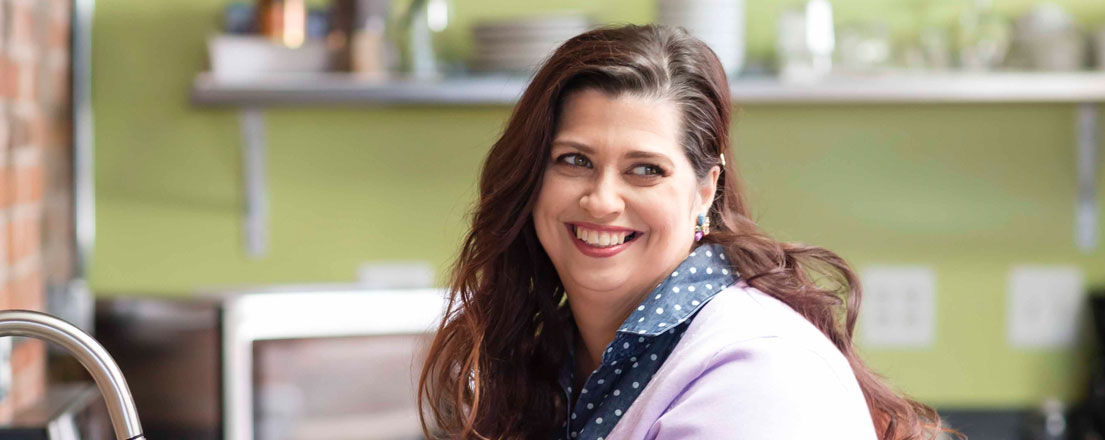
Facing Diabetes On Her Own Terms: How One Woman Took Control of Her Life
When Shannon Prano, 44, learned she had Type 2 diabetes in August 2015, she didn’t take the diagnosis lightly. She’d lost loved ones to complications of the disease. “My grandfather died at 61 when I was 17, due to kidney failure because of diabetes." Her grandfather also had diabetic retinopathy, which causes vision loss and eventually blindness. Her aunt on the other side suffered with these same kidney and vision woes, as well. Despite her family history, Shannon was determined to avoid the same fate. And she knew instinctively that meant doing things differently starting on day one.
“A big part of changing my habits was realizing that I had to,” she says. “It’s not just a vanity thing or losing weight because of what other people think. It’s about my health. I need to do this.”
Her initial treatment included metformin, a drug used to control blood sugar. Unfortunately, the drug made Shannon extremely sick. “I made an appointment with my primary care doctor, and in the week before seeing him, I tracked my sugar levels without the meds and found if I ate correctly and didn’t snack, the numbers were good,” she says. Shannon took the information to the doctor and negotiated a deal with him. She could try no meds and see how it went if she promised to test her sugar three times a day and take some diabetes education classes. She also promised to lose weight, exercise, come in every three months for blood work and see eye and foot doctors for diabetic exams annually.
Shannon took hospital-based classes for people recently diagnosed with diabetes. When she joined the fitness room at her local rec center in Roseville, Michigan, in January 2016, she saw a flier about the diabetes prevention program at Henry Ford Macomb Hospital. Intrigued, she called to see if she could join even though she already had diabetes.
“After the first class, I knew this was what I needed. It covered weight loss, being more active – all the things my doctor had said I needed to do to stay off meds,” she recalls. “And since it’s a year-long program, it also becomes a support group because everyone is trying to do the same thing and help each other with ideas and encouragement.”
How she did it
Exercise started slowly because Shannon has a bum knee and limited mobility from back surgery. In the beginning, workouts were walking to the rec center, using a recumbent bike, walking the dog or doing a Wii Fit™ workout. “I worked up to going to the fitness room three days a week, doing about a mile or so on the treadmill, a half hour on the bike and about 30 minutes on the various weight machines.”
Despite her motivation and resolve, making these meaningful changes proved challenging. “When you first look at proper serving sizes and the amount of fat that’s in what you eat, it can be a little bit of a shock,” she says. The hardest part was learning to shop and cook differently and being willing to try new things.
By January 2017, Shannon had lost 50 pounds – nearly a fifth of her body weight – through diet and exercise. Her A1C, a measure of blood sugar levels over time, dropped from a worrisome 7.3 to 5.3 – well within the normal range. By mid-March she had lost a total of 87 pounds. “I’m eating healthier than ever and I’m getting more exercise than I have in 20 years,” she says. “I started feeling better right away. I saw the numbers on the scale change. I didn’t feel like I saw changes when I looked in a mirror, but everyone else did.”
Today, Shannon assists with the diabetes prevention classes at Henry Ford. She’s a good listener for others trying to manage their diabetes, but she’s constantly surprised at the myths people believe. “It is okay to have some sugar sometimes and that can actually be better than eating a lot of artificial sweeteners all the time. Diabetes doesn’t have to be a death sentence or even stop you from doing things you want to do.”
Tips from the trenches
The changes needed to battle diabetes can be overwhelming if you try to make them all at once, says Shannon, knowingly. Start small, she advises, making one change to your eating habits. A couple weeks later, take another small step, maybe adding in a little exercise.
“Learn to adjust the diet to fit you,” she says. “They give you fat gram guidelines and water guidelines for a reason. But don’t be so strict that you set yourself up for failure.” Shannon’s weekly treat is a “bakery day” for one delicious sweet.
“My weekly fasting glucose checks now are in the low 90s, and my diabetes is managed solely by diet and exercise,” she says. Shannon follows the suggestions given in the diabetes prevention class and sticks to her doctor’s recommended testing schedule. She also sees the podiatrist and eye doctor annually – critical to early detection of devastating complications of diabetes.
“I feel better today,” Shannon says proudly. “And I feel like I can control the diabetes – though possibly not much else in my life,” she adds wryly. “But I do have a firm grasp on diabetes.”
To learn more about Henry Ford's Diabetes Prevention Program, call (800) 532-2411.
Categories: Get Healthy